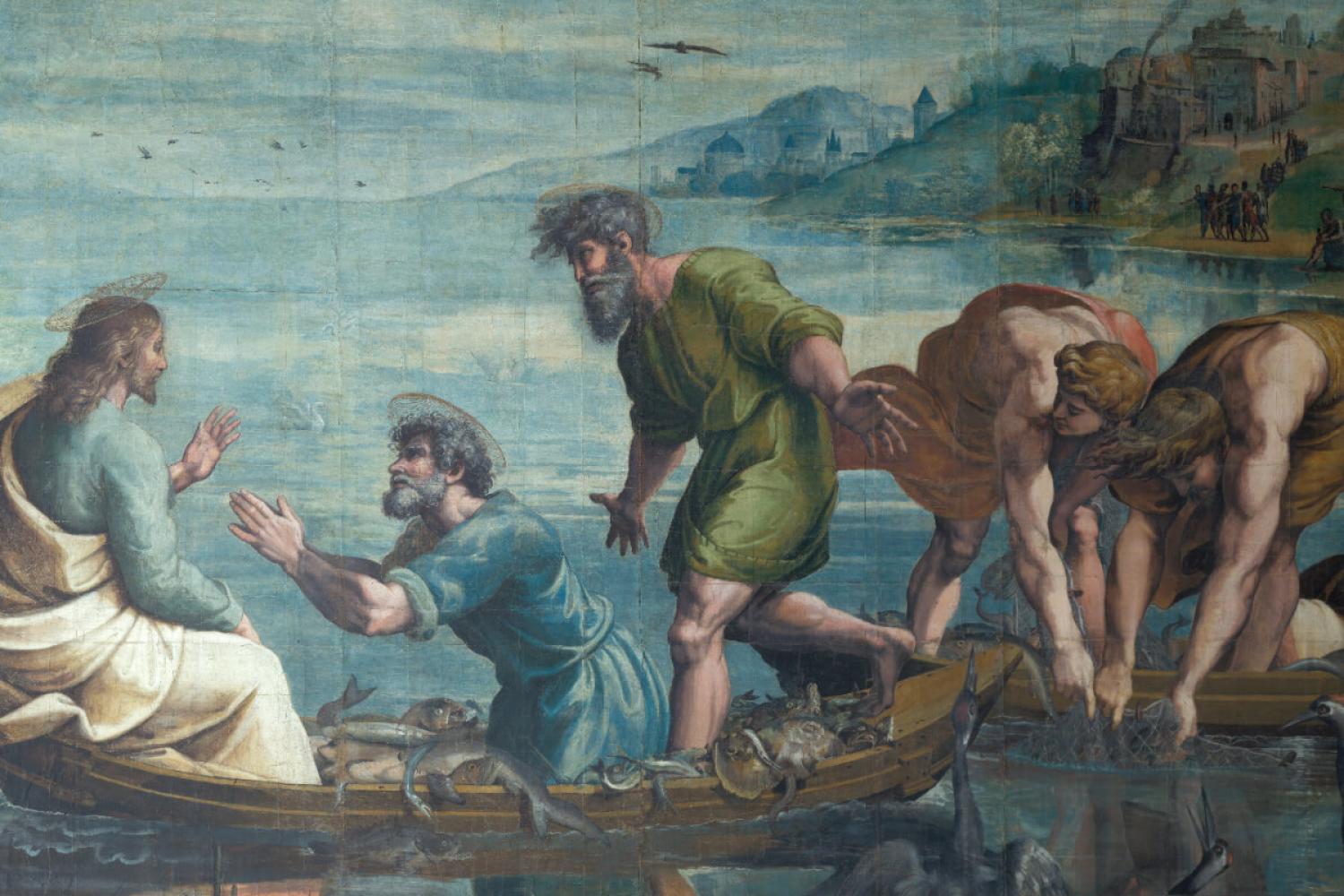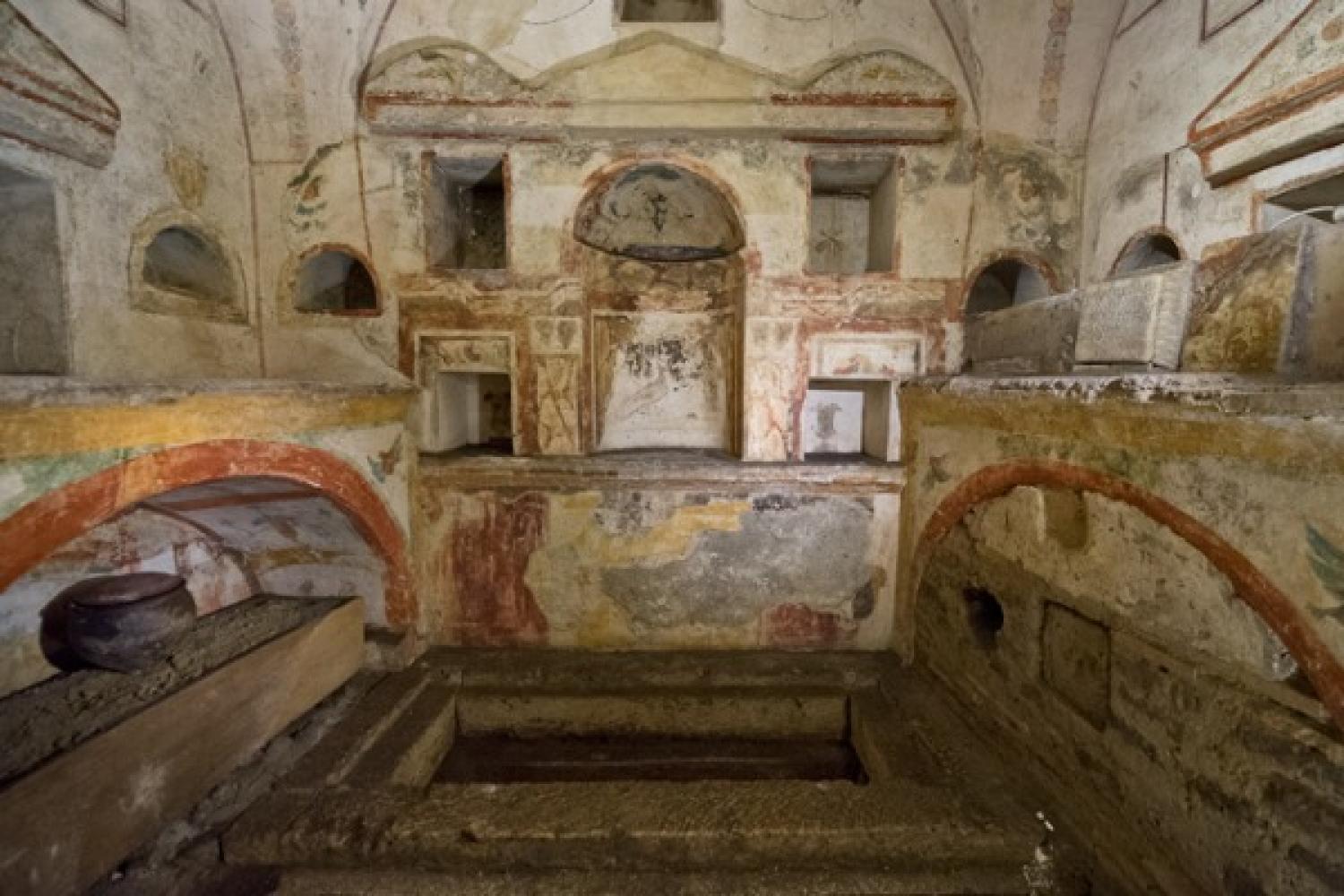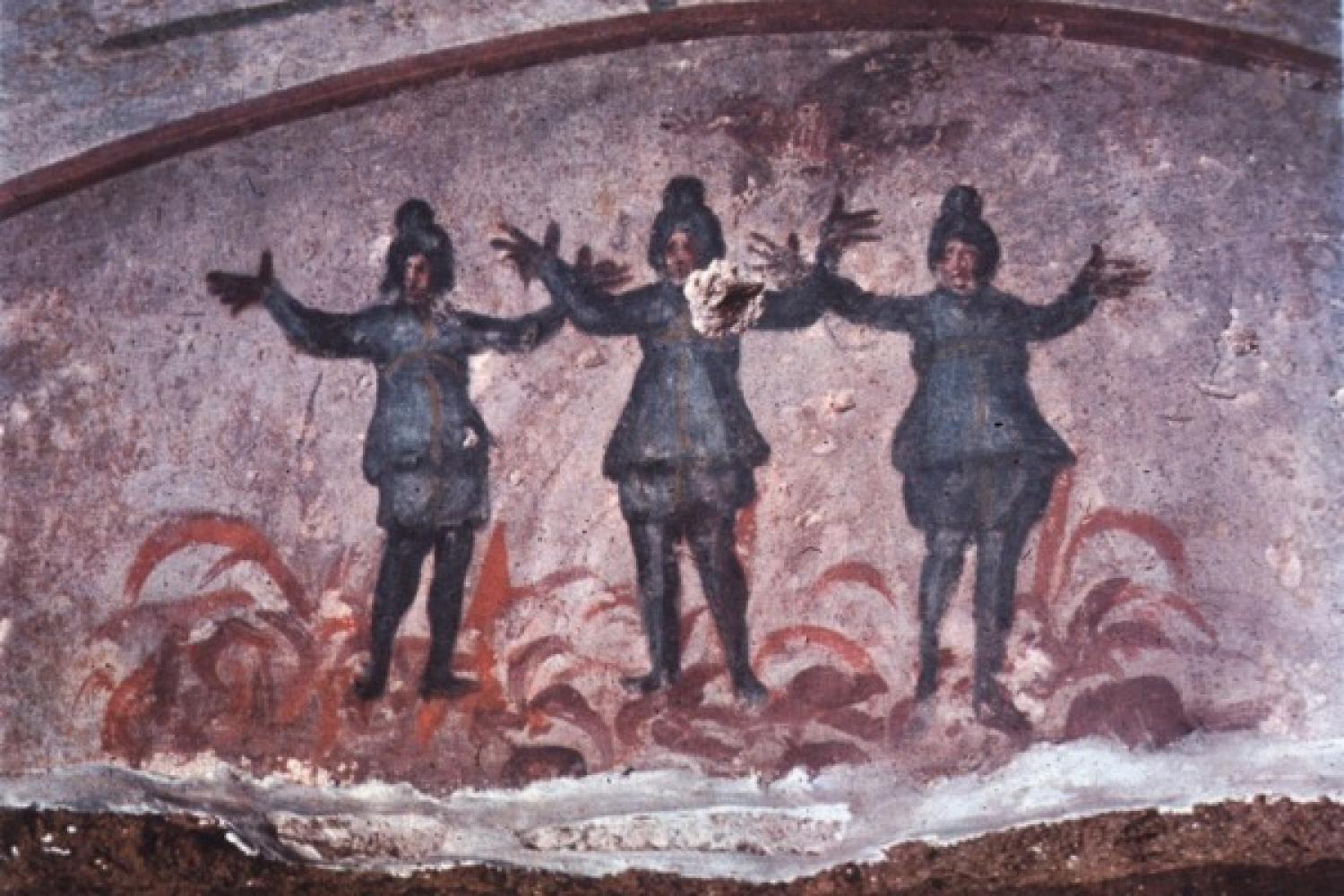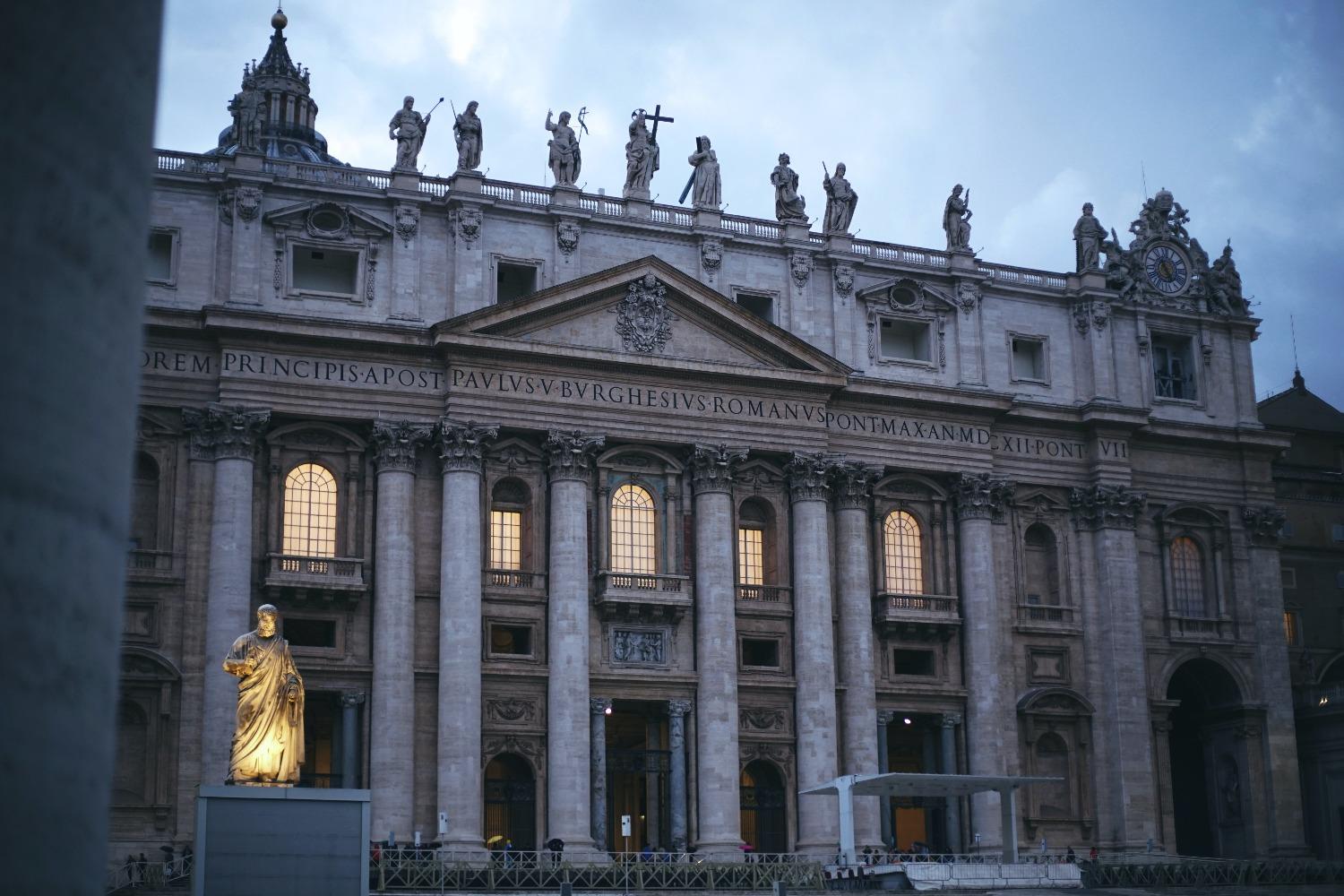
George Weigel's Letters to a Young Catholic explores and comments on Catholic culture, examining history and theology, art and architecture, literature and music. This article is the second in a series that walks through Weigel's work letter by letter, providing imagery to enhance the reader's experience. Here we explore "Letter Two, The Papal Basilica of St. Peter's, Rome: The Scavi and the Grittiness of Catholicism." Click here to view the entire series.
“ Peter is here.” These words are scratched, like so much ancient graffiti, into the wall of a tomb in a necropolis buried deep beneath St. Peter’s Basilica in Rome. Uncovered in the early twentieth century by accident during renovations to accommodate the new mausoleum of Pius XI, these catacombs were painstakingly excavated by archaeologists using the latest techniques of the day. In the heart of one of the “districts” that made up this city of the dead they discovered a Tropaion, or monumental tomb, out from which radiated other tombs. In the back of the Tropaion was a wall covered with pious graffiti, one of which quietly indicated “Peter is here.” In the grave were found the skeletal remains of a man, of which only the feet were missing. Peter, crucified upside down in Caligula’s circus near the spot where he was buried, was presumably removed from the cross using one of the easiest methods, by hacking off his feet.
The Tropaion of Peter is the heart of the Scavi (“excavations” in Italian) beneath St. Peter’s Basilica and is the subject of George Weigel’s second “letter” in Letters to a Young Catholic. The Scavi awaken us to what Weigel calls the “grittiness” of Catholicism, by which he means its unyielding historical reality. Tombs and graffiti cannot be ignored or dismissed as mythical but must be contended with if we are to be intellectually honest. “Peter is here” means that he was not a figment, that his life and testimony and martyrdom were facts of historical reality in space and time. This should shock us, Weigel thinks, out of a tidy complacency that looks at the New Testament and early martyr accounts as nice, pious stories and into the gritty realism of history.
The very fact-iness of Peter’s remains leads Weigel to meditate on Peter, on his conversion, on his weakness, and especially on the continuous transformative action of grace in Peter’s life. That a fisherman from Galilee should be hailed as the foundation stone of a worldwide religion is a shocking and crazy thing. And Peter was probably as shocked as anyone else. Peter is thoroughly human, given to grand proclamations of faith as well as tremendous failures of faith—proclaiming Jesus as the Messiah on one hand and denying him in Pilate’s courtyard on the other; declaring a readiness to follow Christ to the death, and yet slinking out of Rome in the height of Nero’s persecution. None of this humanness is excised from the story of Peter or of the Church, and this important. Weigel notes that “weakness and failure are part of the Catholic reality from the beginning,” because it is in weakness that every Christian is transformed by grace, purified by love, and strengthened to give everything for Christ, just as Peter did. Even after all his failures, Peter was given courage, ultimately to hang from his cross in Caligula’s circus. In the end, “Peter is here,” in the end, Love triumphs.
Photo Attribution A: "Vatican Necropolis" by Blue 439 is licensed under CC BY-SA 3.0.

Next: The Face of Christ
In the third chapter of "Letters to a Young Catholic," Weigel explores two places that confront us with the reality of Christ: a monastery on Mt. Sinai and the Holy Sepulchre.
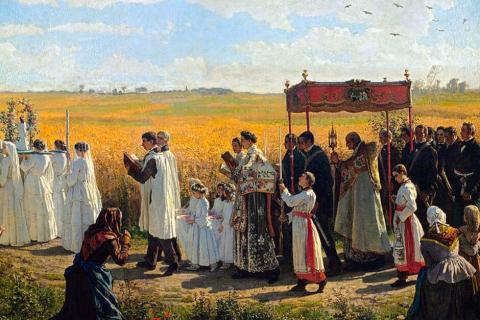
Previous: Acquiring a 'Habit of Being'
In the first chapter of "Letters to a Young Catholic," George Weigel explores what it means to grow up Catholic, growing into a common way of life with shared customs and a shared symbolic world.
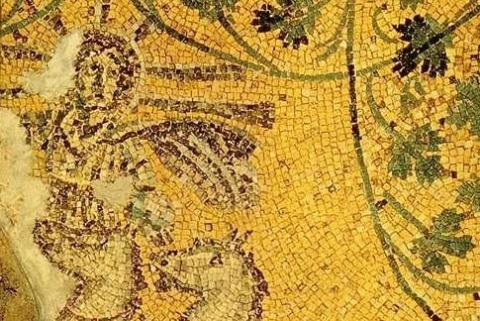
The Scavi
Learn more about the excavations of the Vatican Necropolis (or "Scavi") by exploring Prime Matters' first-ever Enrichment article.

The First Draught
To receive the Weekly Update in your inbox every week, along with our weekly Lectio Brevis providing insights into upcoming Mass readings, subscribe to The First Draught.
